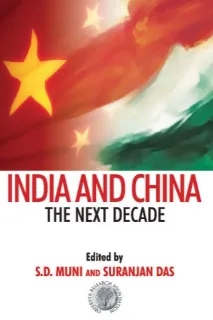India and China have emerged as two of the most critical players not only in Asia but the world as a whole. Their mutual engagement during the coming decade will significantly influence the defining of strategic and economic relations in Asia and beyond. There are three important areas in which the engagement between the Asian giants will unfold in the years to come; namely economic, strategic and on Asian and global issues. Both economically and strategically, there is a vast space for the two to co-exist in cooperation and competition. The bilateral trade and investment have recorded remarkable growth in the past few years and this trend is likely to sustain. Strategically, both have accepted a mutual partnership and gone to the extent of undertaking joint military exercises, including those aimed at countering terrorism. Both India and China have also expanded the reach as well as intensity of their interactions with the Asian neighbours. While China has been accepted as an observer in the South Asian Association for Regional Cooperation (SAARC), India has also made a place for itself in East Asia Summit and the Shanghai Cooperation Organisation (SCO). Both India and China have issues of common concern in world politics related to energy security, climate change, terrorism, uni-polarity and global financial instability.
This fast growing constructive engagement between India and China might have blunted some of the sharper edges of distrust between them but in no way has it been able to bridge the trust deficit that has existed between them for the decades. India’s worries are mostly with regard to the unsettled border issue and China’s potential to erode India’s strategic space in its immediate neighbourhood. China also will not abandon propping and cultivating Pakistan, including in the nuclear field, for keeping India tied up in South Asia. China’s worries arise from the growing strategic proximity between India and the USA and how may this equation define the contours of Asian balance of power for China. The re-eruption of Tibetan issue in 2008 has further reinforced China’s concerns about its internal vulnerability and the potential of the external powers’ proclivity to exploit this vulnerability.
The Volume, which resulted from a joint seminar of Observer Research Foundation and the University of Calcutta, probes the constructive as well as conflictual dimensions of India- China engagement. Well known economists, strategic experts, senior diplomats and policy makers have put their heads together to present a balanced and meaningful perspective on the relationship of Asia’s two giants with each other and with the rest of the world.
The views expressed above belong to the author(s). ORF research and analyses now available on Telegram! Click here to access our curated content — blogs, longforms and interviews.





 PREV
PREV



